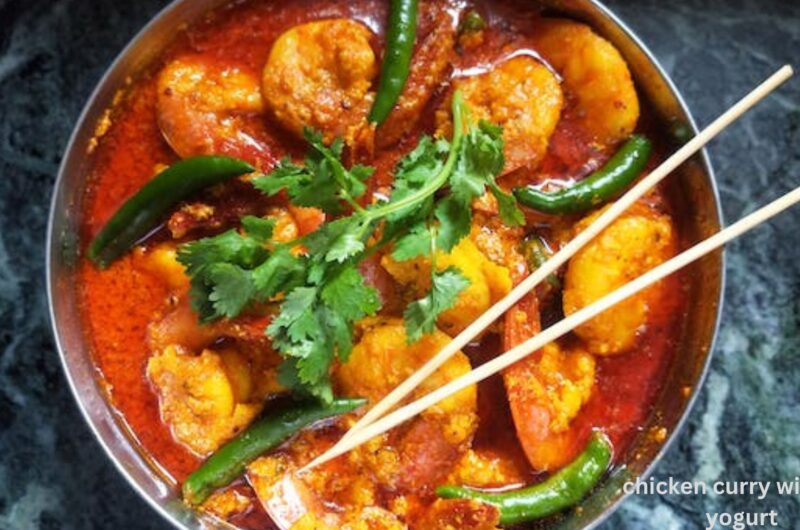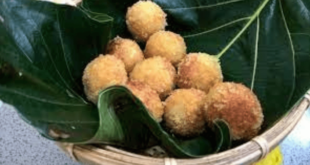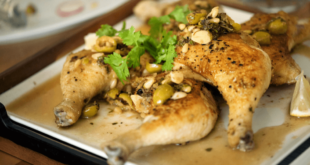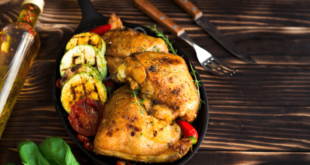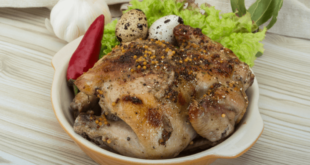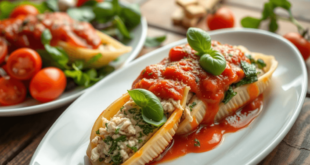Everyone loves chicken curry, right? But what if you can’t eat yogurt, an ingredient often used in the recipe? Got a lactose intolerance? Vegan perhaps? Or yogurt just doesn’t sit right on your taste buds? No problem! you can still experience a fantastic, savory chicken curry without yogurt.
Consider cooking chicken curry with coconut milk, not yogurt. The smooth, thick quality of coconut milk enhances the dish, marrying well with the curry spices because of its faint sweet taste. Here’s a quick way. Start by cooking chopped onions, garlic, and ginger in a pan tossed in your chosen curry powder. Follow by adding cut chicken breasts until they turn brown. Finish by pouring a can of coconut milk and slow-cooking the curry until the chicken is thoroughly cooked. Need a way to make chicken curry without yogurt? Try tomato sauce or puree. It adds a tangy, somewhat sweet taste to the curry. Pairs up pretty well with the spices. For chicken curry using tomato sauce, start with onions, garlic, and ginger. Brown them in a pan with a sprinkle of curry powder. Next, add chopped chicken breasts. Cook till they’re brown. A can of tomato sauce or puree goes in next. Simmer the curry. Wait for the chicken to cook properly and sauce to get thick.
Jump to RecipeBenefits of Chicken Curry Without Yogurt

Dietary restrictions and preferences: Chicken curry with no use of yogurt is good to go for lactose intolerant and allergic to dairy products people. This is also the best option for those who are in a vegan or vegetarian lifestyle and would like some proteins in their menu. In case the order was made, excluding the portion of yogurt, one would still savor the excellent taste of the curry without any aftereffects.
Lighter and low in calories: Another reason that gives a chicken curry without yogurt an upper hand is the fact that it is much lighter and also low in the calories than the regular chicken curry. The yogurt seems to add an extra creaminess as well as richness to the chicken curry, hence making it heavier in the taste as well as calories as compared with a normal one. And minus the yogurt, it still becomes flavorful and hearty food less than sluggish feeling after every meal.
Dietary consideration: Chicken curry without yogurt is perfect for a few who are allergy-stricken. It will also be nice to add either cashew nuts or almonds into most of the traditional chicken curry recipes. Like any other milk product, this ingredient may be allergic for some consumers. If you substitute yogurt with something else – your chicken curry will have all the necessary taste properties and no surprises.
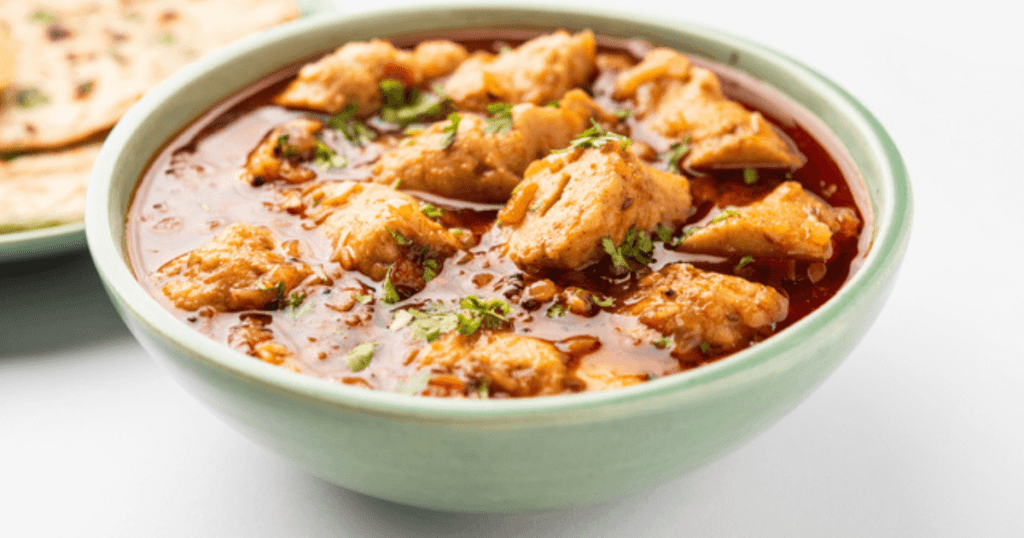
Popular Chicken Curry Varieties Without Yogurt
Though the most common ingredient while making most chicken curry recipes remains yogurt, it should not be a must for the food to taste great. For instance, there are those popular chicken curry dishes that do not need an addition of any yogurt whatsoever. One such dish is the coconut chicken curry, made in coconut milk instead of yogurt. Another hit is spicy chicken curry called vindaloo, well known for its heat and strong taste due to the use of vinegar and spices. For something less spicy, korma chicken curry will do great. What makes this dish is a sauce that should be creamy and flavored with aggressively spiced flavors such as cardamom and cinnamon. Other popular chicken curry varieties that don’t contain yogurt include the butter chicken curry, masala chicken curry, and tandoori chicken curry. With all the flavorous options, you shouldn’t have to deny yourself the pleasure of enjoying chicken curry just because in your own house, you don’t have yogurt.
A. South Indian Style
South Indian Cuisine is specifically famous due to the varied flavors and spices used within it. The cuisine is significantly famous for its vegetarian dishes, but still, a whole lot of non-vegetarian ones can be found in it. South Indians are muchas diversified when it comes to food taste, and this is why every region has its very own specialty.
South Indian Style is one of the most preferred styles of preparing South Indian Cuisine. In this style, food is cooked very much with spices such as coconut, curry leaves, and tamarind along with mustard seeds. Most interestingly, spiciness and tangy tastes are also much characteristic of this style. South Indian Style dishes mainly form part of meals consisting of rice, lentils, vegetables, with chutneys and pickles.
This list of some of the most famous dishes in South Indian Style includes Dosas, Idlis, Vadas accompanying Sambar. All these preparations are not only tasty but also hygienic and nutritious, and preferred as a part of balanced diet regime.
By and large, the South Indian Style of cuisine cannot be overlooked if one intends to experience the varied and rich culinary expertise of the Indian food. With a range of its own spices and ingredients, it is sure to titillate your taste buds and whet your appetite.
B. Thai-inspired Coconut Chicken Curry

This is a yummy creamy meal that can be made hot if you like to tickle your taste buds too. This is how to prepare this Thai-style coconut chicken curry: In the first place, you will need tender strips of chicken fillet, a can of coconut milk and some curry mix for the dish. The other accompanying ingredients include garlic, ginger, chili flakes, bell pepper, onion and any variety of fresh vegetable that you fancy like ginger, scallion or cilantro wrapped inside a banana leaf.
Start by frying garlic, ginger, and chili flakes in a pan till the mixture gives out its smell. Add in chicken breast and fry until it is brown. When chicken has cooked, add curry powder and mix everything together.
Then mix in with the coconut milk. Stir it up well to blend with the cream sauce. Let the curry simmer a few minutes. That way all the flavors mingle together. Now, toss in your cutup veggies and cook
them till they’re soft. Finally, dish it up on a mound of fluffy rice or with some hot naan bread. You’ve just made a classic Thai coconut chicken curry.
C. Spicy Tomato-based Chicken Curry
Spicy tomato-based chicken curry – flavored and aromatic with a rich mix of spices and soft chicken. It is a very tempting chicken dish in which succulent pieces of chicken are cooked in a delicious sauce made with tomatoes which have been mixed with various spices like cumin seeds, coriander, turmeric, and red chili. The curry is all vibrant in color, with strong flavors serving up a very delightful and memorable meal. Perfect with steamed rice or warm, fluffy naan bread, it makes for a truly heartwarming, spicy delight.
Ingredients for Chicken Curry Without Yogurt
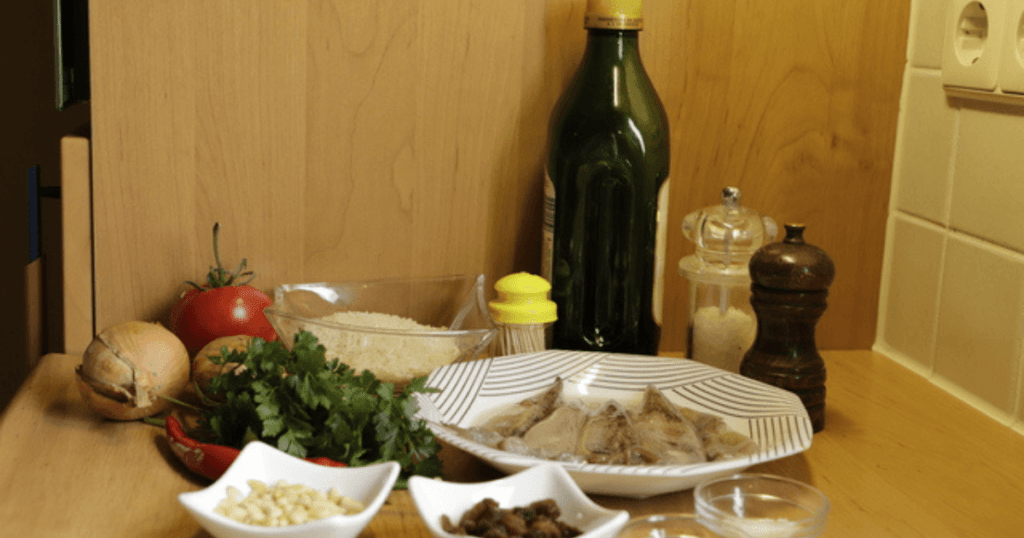
Here is what you’ll need to make chicken curry without yogurt:
- Chicken: Boneless, skinless chicken breasts or thighs
- Oil: Vegetable oil, canola oil, or ghee
- Onion: Finely chopped onion
- Garlic: Minced or finely chopped
- Ginger: Minced or finely chopped
- Tomatoes: Fresh tomatoes or canned diced tomatoes
- Spices: Garam masala, turmeric powder, cumin powder, coriander
- powder: chili powder (to taste), and salt
- Liquid: Water or chicken stock
- Fresh herbs: Chopped cilantro or coriander leaves for garnishing
- Optional extras: Capsicum (bell peppers) thinly sliced, just enough to add color, green peas, or any other vegetable of choice can be added too.
With these ingredients, you can prepare a delicious yogurt-free chicken curry. If you need a detailed recipe or instructions on how to prepare the curry, please feel free to ask!
How to make Chicken Curry
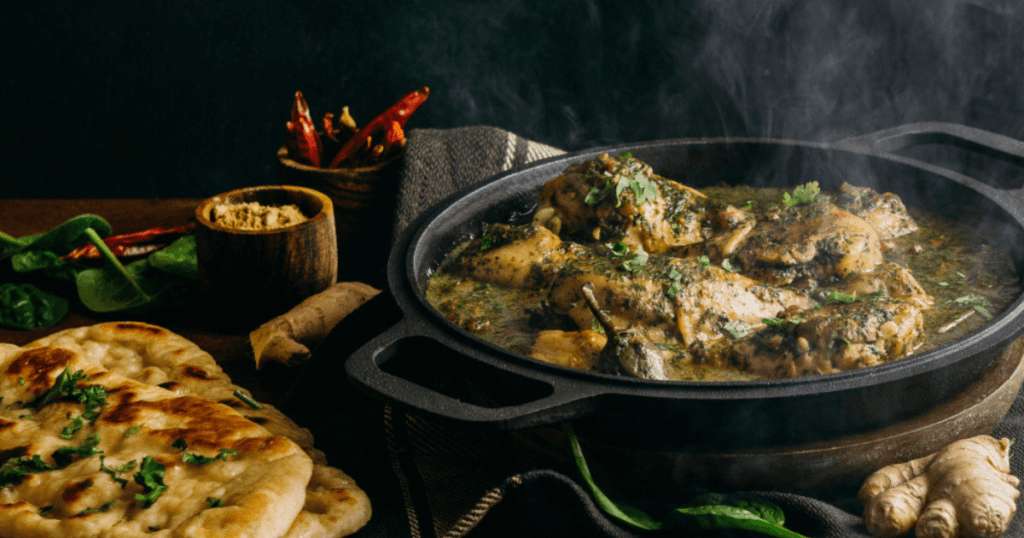
Sure thing! Here’s how to make chicken curry without yogurt:
1. heat some oil. Use a large skillet or pot, and set your stove to medium-high.
2. toss in chopped onions. Let them sizzle till they’re clear and soft.
3. it’s time for garlic and ginger. Mince them fine, then add. Give it a minute – wait till you smell the aroma.
4. put the chicken in. You want all its sides to turn golden brown.
5. After the chicken is brown, place in the pot the spices (garam masala, ground turmeric, ground cumin, ground coriander, and chili powder). Stir all of this together well to make sure all the chicken is coated with the spice mixture
6. Cut up tomatoes and go in next. Stir them. When they soften and juice comes out, they’re ready.
7. Pour in chicken stock, totally covering the chicken. Let the curry softly bubble.
8. Now’s the time to put the lid on. Keep it simmering for about 20 to 25 minutes. That’s when you know the chicken is cooked and everything tastes great together.
9. Try out the seasoning in the curry when the chicken’s cooked right.
10. Finish it off before serving by sprinkling fresh cilantro or coriander leaves on top of the chicken curry.
The cooking time and seasoning can be adjusted according to your taste as well. Serve the rice or naan with this curry so that it is a complete meal served.
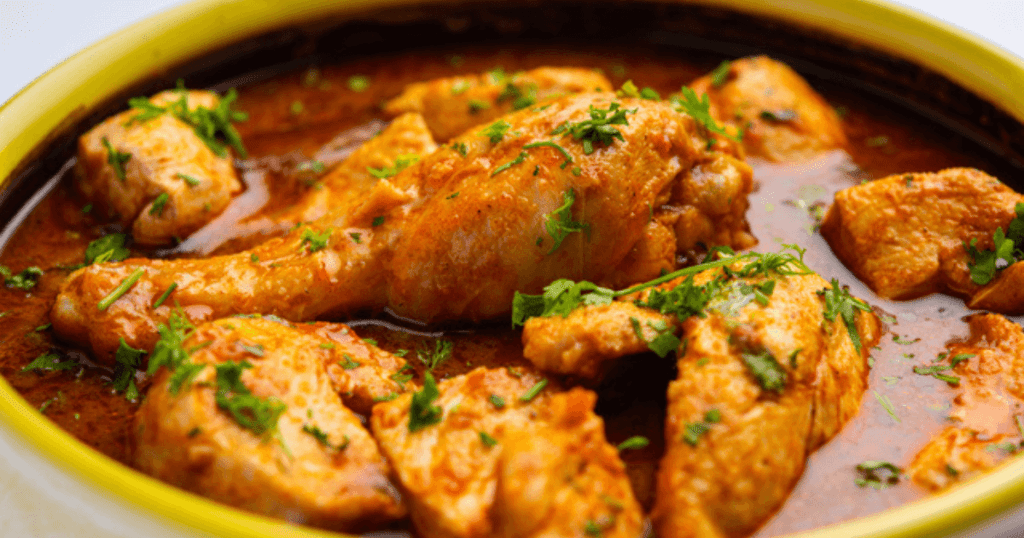
Tips for Achieving Perfect Texture and Flavor
Sure! Here are some tips for achieving the perfect texture and flavor in your yogurt-free chicken curry:
A. Margination techniques:
– If possible, it is always nice to marinate the chicken with spices garlic ginger mixture for at least 30 minutes before cooking as it will enhance the flavor of the dish in addition to making the meat tender.
– Use lemon juice, vinegar, or even a bit of oil to marinate the chicken with no yogurt in it for your desired flavor.
B. Spice level adjustment according to taste:
Begin by tying yourself to the required spices in the mixture, then start off by simmering the curry while tasting and seasoning it for a taste according to your taste. If you need a further stronger taste, continue adding more garam masala or cumin as you wish continually. In case heat is your thing, then add more of the chili powder.
C. Enhancing richness without yogurt:
In case you feel the need for an extra creamy curry without any use of yogurt, then you can add an optional little coconut milk or cashew cream at the end of cooking time to make it richer. The coconut milk and cashew cream will thicken as well as give body and flavor to the curry.
– Another option of having the vegetables in rich consistency is by combining nuts such as almond, cashew or even sesame seeds in the curry base for a thicker and richer base.
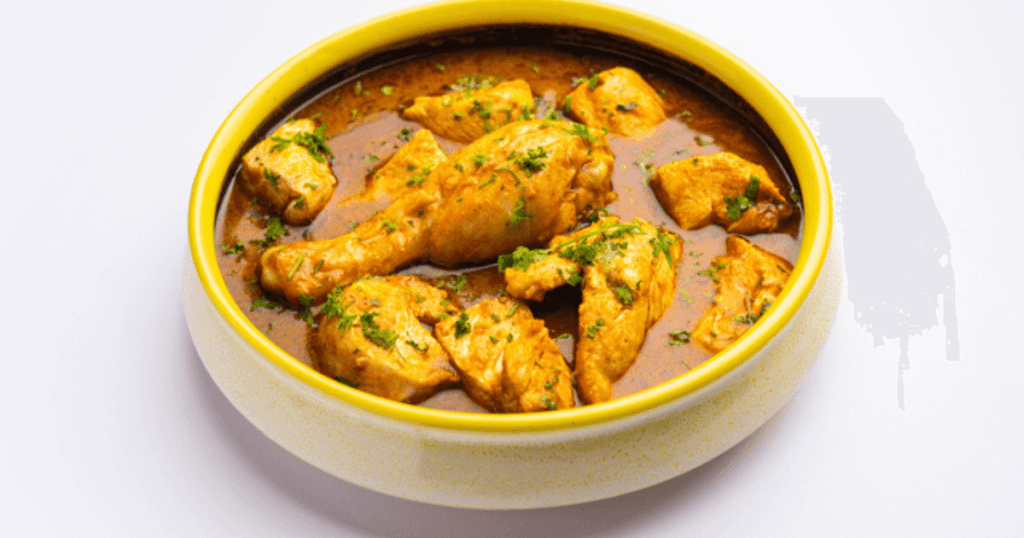
Common Mistakes to Avoid for Cooking Chicken Curry Without Yogurt
A. Overcooking the chicken:
In order to prevent them from becoming overcooked and dry, at the proper time according to its thickness, use a meat thermometer to test for the correct temperature inside, and marinate in advance to help tenderize and add additional moisture. Check the chicken often and remove it from the heat once the right temperature is reached so that it doesn’t overcook.
B. Imbalance of spices
Make sure that the spices are not out of balance while cooking by basically following your recipe or using a little bit of each if you are to experiment with your recipe. Tasting as one cooks enables ensuring that the spices in the recipe are well balanced. Another way is to be creative with pre-blended spice powders, which have the right balance of all the flavors. By keeping in mind the balance between spices, anything can be a dish.
C. Appropriate replacement liquid
It is smart enough to select the proper liquid in order to maintain proper health. However, sometimes we tend to go on choosing unsuitable alternative liquids that are harmful for our health. For example, when the drinking of water is replaced by sugary drinks, it may enhance our risks of getting sick from diabetes, becoming obese, among other risks. Equally, the replacement of alcohol in the place of water may get us dehydrated and have our livers damaged. Attention to the type of fluids consumed should be made, where healthier alternatives should be considered such as taking plain water, green tea, and freshly squeezed fruit juices. This way, the body’s need for these fluids can be regulated adequately to keep it in a fitter state.
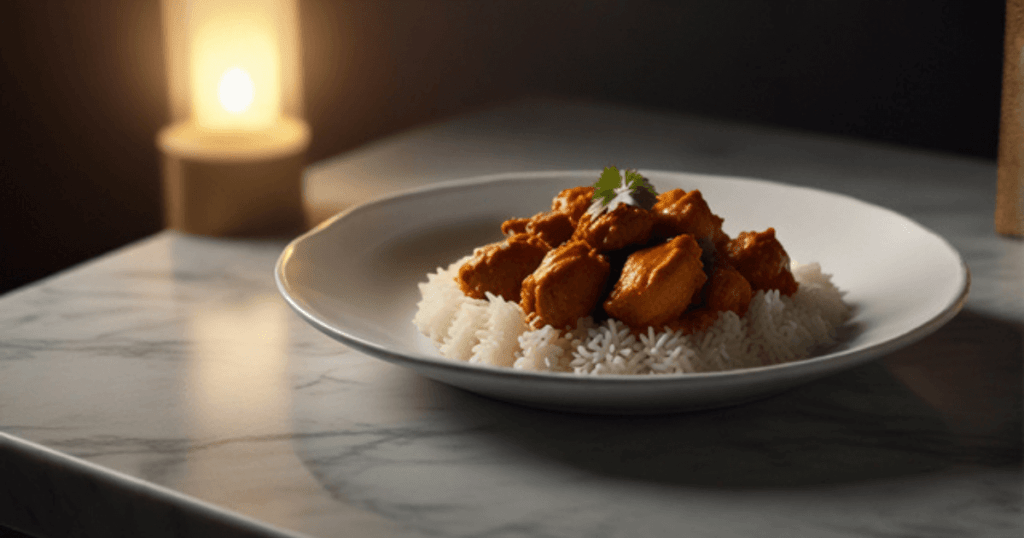
What to serve with chicken curry
To make the best use of your serving suggestions for the meal on hand, a few additions may be in order. For example, what side dish may fit well with the serveup? There are various accompaniments that one can choose to go with and complement the tastes and textures of the main dishes. For instance, in this particular case with grilled steak, then the best accompaniment would be either roasted vegetables or a crispy salad.
Second, consider the best choices for rice or bread. If you are serving a spicy curry, then rice is an excellent option, especially basmati that gives out a tantalizing aroma along with cucumber raita as the cooling side. On the other hand, a hearty stew might be best served with crusty bread or a side of mashed potatoes.
Lastly, you are simply to choose side dishes that will not only complement your main serving dish but also add sparks and excitement into your meal. Consider experimenting with these ideas – or let your imagination take free rein.
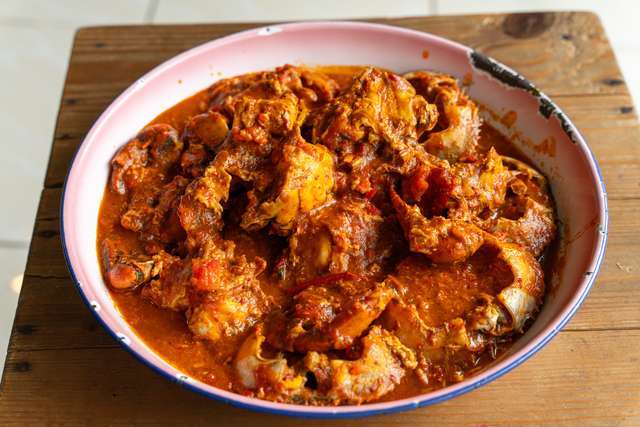
Health-conscious Options
Want a healthier, yogurt-free chicken curry? Here’s the way:
A. Change out fattening ingredients:
Swap regular cooking oils for cooking sprays. Or how about better for your health oils? Think olive oil or avocado oil. Just don’t overdo it.
Choose skinless chicken breasts, not chicken thighs. This way, this recipe becomes less fatty.
Also, you can use half the usual amount of fats like ghee or oil. This alone can slash the calories of the recipe big time.
B. Addition of more vegetables:
Consider including more veggies in your curry. Bell peppers, spinach, carrots, and peas not only enhance taste and color, but also boost fiber and vitamin content.
Mix in vegetables when preparing your curry sauce. A blend of pureed tomatoes, onions, and peppers provides a rich, savory base without unhealthy additions.
All these changes make your chicken curry, free from yogurt, healthier and more beneficial.
Frequently Asked Questions (FAQs)

Does yogurt go in curry?
Did you know yogurt is also many a time used in most Curry recipes? When added, its introduces tanginess and a silky texture that elevates the taste to another level. In most cases, it is applied as a curry sauce base with spices and condiments. It can also be served as yogurt sauce for meat or vegetables that are marinated and ready for curry cooking. So go ahead and add yogurt to your next curry recipe – it’s a tasty and authentic ingredient that is sure to satisfy.
Can I use milk instead of yogurt in curry?
Curry can use either yogurt or milk. Classic curry recipes often include yogurt. Milk can step in as a replacement, but be aware. Milk might thin out your curry. Are you seeking a nondairy option? Try coconut milk, a great stand-in for either yogurt or milk. But remember, it’s all about your taste and the recipe you’re using. Don’t be scared to mix it up and find your favorite ingredient combo!
What are the best sides to serve with yogurt-free chicken curry?
Chicken curry, minus the tang of yogurt, might pair well with sides like fluffy basmati rice, soft naan bread, tasty roasted vegetables, and crunchy cucumber salad. These sides don’t just bring good food balance, they also give varied textures to eat. All these could really be nice with chicken curry, even without yogurt. At last, it’s up to you to decide which sides match your meal the best.
Does yogurt make curry thicker?
If you want the creamy part in your Indian curries, then yogurt will be a nice replacement. It can replace cream and at the same act as a thickener for sauces. In this aspect, it is one of the most commonly used sauce thickeners that are used in Indian cuisines. Greek yogurt is the best choice compared to normal yogurt, as it’s thick and doesn’t split when heated in the pan.
What is chicken curry made of?
The freshest ingredients of onion, garlic, and ginger can really bring out the deepest and most complex flavors in all dishes. It would be good to invest in some low-sodium chicken broth which will work wonders as a sauce’s base that covers the chicken altogether. While many are willing to make use of the fresh version, cans of tomatoes are much quicker and easier.
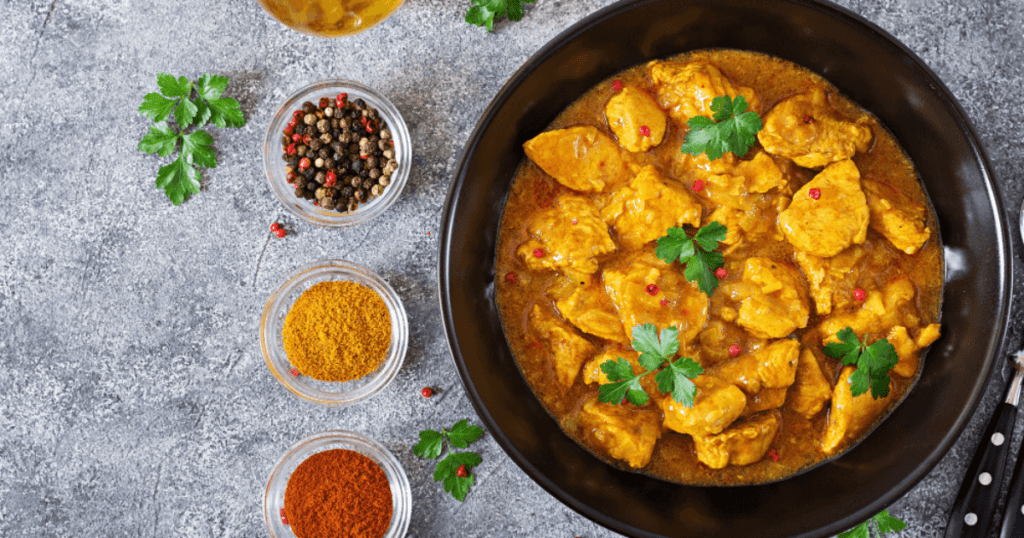
Recipe Adaptations for Special Diets
Absolutely! Here are the special diet recipe modifications for the yogurt-free chicken curry:
A. Gluten-free substitutes:
– For a gluten-free chicken curry, ensure that all the spices and ingredients used in the dish should have no gluten or gluten-containing contaminants through additives and contamination.
– Substitutes for regular flour in the event you want curry thick but easy to translate to required thickness include cornstarch and arrowroot powder.
– When serving the curry, pair it with gluten-free options such as steamed rice, quinoa, or gluten-free naan bread.
B. Modification for keto diet:
– If your diet is keto friendly, consider using boneless, skinless chicken thighs or breasts for this recipe and add healthy fat such as coconut oil or ghee for your cooking purpose too.
– The number of tomatoes can also be reduced in order to play around with the carbs added since tomatoes do contain natural sugars. In this manner, you will reduce the use of tomato products and instead add other low-carb vegetables such as bell peppers and spinach which will significantly increase the volume and the taste of your recipe.
– Alternatively, for a low-carb option, use low-carb vegetables in moderation and serve the curry with cauliflower rice or shirataki noodles instead of rice or traditional naan.
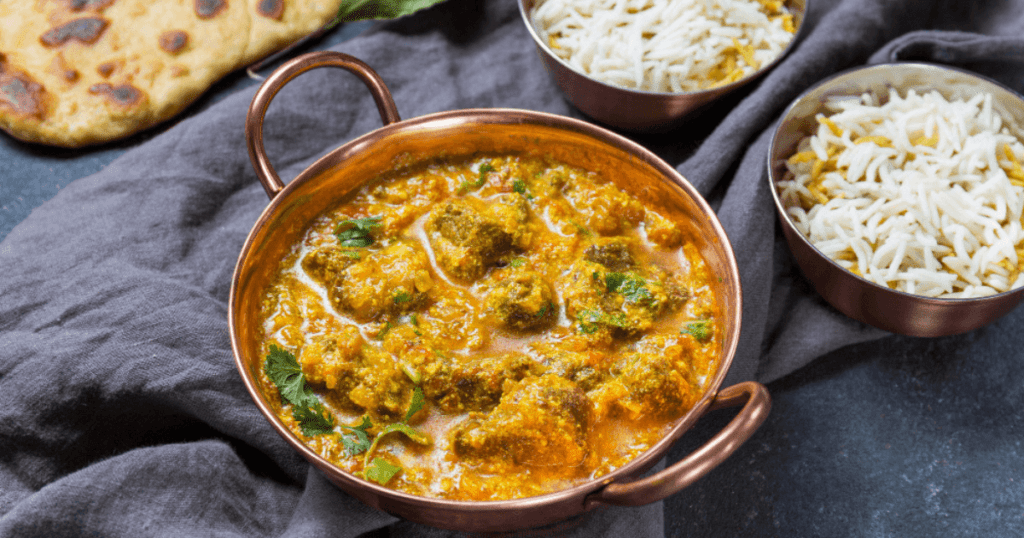
Conclusion
On the whole, we have elaborated on some of the benefits of not using yogurt in chicken curry including it as a healthier one for people who avoid lactose-based products or come under certain dietary restrictions asking them to avoid dairy items, and it could be still eaten as a delicious food available with spicy richness even without a special item like yogurt. We hope this has inspired you to try making your version of yogurt-free chicken curry and experiment with flavors and ingredients to make it your own. Don’t be afraid to get creative and make it your unique dish that you can enjoy time and time again. Happy cooking!
Chicken Curry Without Yogurt
Course: Dinner, Lunch, RecipesDifficulty: Easy4
servings15
minutes35
minutes300
kcalIngredients
Chicken: Boneless, skinless chicken breasts or thighs
Oil: Vegetable oil, canola oil or ghee
Onion: Finely chopped onion
Garlic: Minced or finely chopped
Ginger: Minced or finely chopped
Tomatoes: Fresh tomatoes or canned diced tomatoes
Spices: Garam masala, turmeric powder, cumin powder, coriander
powder, chili powder (to taste), and salt
Liquid: Water or chicken stock
Fresh herbs: Chopped cilantro or coriander leaves for garnishing
Optional extras: Capsicum (bell peppers) thinly sliced, just enough to add color, green peas, or any other vegetable of choice can be added too.
Directions
- heat some oil. Use a large skillet or pot, and set your stove to medium-high.
- toss in chopped onions. Let them sizzle till they’re clear and soft.
- it’s time for garlic and ginger. Mince them fine, then add. Give it a minute – wait till you smell the aroma.
- put the chicken in. You want all its sides to turn golden brown.
- After the chicken is brown, place in the pot the spices (garam masala, ground turmeric, ground cumin, ground coriander, and chili powder). Stir all of this together well to make sure all the chicken is coated with the spice mixture
- Cut up tomatoes and go in next. Stir them. When they soften and juice comes out, they’re ready.
- Pour in chicken stock, totally covering the chicken. Let the curry softly bubble.
- Now’s the time to put the lid on. Keep it simmering for about 20 to 25 minutes. That’s when you know the chicken is cooked and everything tastes great together.
- Try out the seasoning in the curry when the chicken’s cooked right.
- Finish it off before serving by sprinkling fresh cilantro or coriander leaves on top of the chicken curry.
Notes
- The cooking time and seasoning can be adjusted according to your taste as well. Serve the rice or naan with this curry so that it is a complete meal served.
 Moanacafe Healthy Kitchen
Moanacafe Healthy Kitchen

